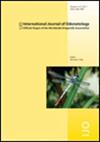将物种多样性作为人类活动影响的生物指标
IF 1
4区 农林科学
Q3 ENTOMOLOGY
引用次数: 2
摘要
在过去的几十年里,蜻蜓和豆娘越来越多地被用作生物多样性研究的模型,这揭示了物种保护的自然过程和机制的几个特征。然而,生物多样性是一个多义概念,它解决了多个维度,这些维度共同包含了我们所观察到的物种和谱系多样性。其中一个维度是种族多样性,它可能代表个人行为特征的多样性和更高的组织水平。因此,生物多样性的测量可以作为衡量生物多样性这些方面的指标工具。然而,我们仍然缺乏衡量这种多样性的方法和协议。因此,在这里我们讨论了豆娘的行为是否可以作为环境影响的指标。我们在两个地点收集了120只雄性的行为数据,一个在生态保护区,另一个在受影响的栖息地。我们的研究结果显示,在比较受影响和保守环境中的人群时,行为综合征和行为完整性存在差异。总之,我们希望这些结果能激励未来的努力,创造一个评估行为多样性的方法框架。本文章由计算机程序翻译,如有差异,请以英文原文为准。
Odonate ethodiversity as a bioindicator of anthropogenic impact
The increasing use of dragonflies and damselflies as models in studies on biodiversity in the last decades has unraveled several features of natural processes and mechanisms for species conservation. Nevertheless, biodiversity is a polysemic concept that resolves multiple dimensions that, together, enroll what we observe as species and lineages diversity. One of these dimensions is Ethodiversity, which may represent the individual diversity of behavioral traits and higher organization levels. Hence, measures of Ethodiversity may be used as indicator tools to measure such dimensions of biodiversity. However, we still lack methods and protocols to measure this diversity. Therefore, here we addressed whether damselfly behaviors may act as indicators of environmental impacts. We collected behavioral data of 120 males in two sites, one in an ecological reserve and another in an impacted habitat. Our results show differences in behavioral syndromes and behavioral integrity when comparing populations in impacted and conserved environments. In conclusion, we hope that these results stimulate future endeavors to create a methodological framework to assess behavioral diversity.
求助全文
通过发布文献求助,成功后即可免费获取论文全文。
去求助
来源期刊

International Journal of Odonatology
ENTOMOLOGY-
CiteScore
2.30
自引率
0.00%
发文量
15
审稿时长
>12 weeks
期刊介绍:
International Journal of Odonatology (IJO) is aimed at providing a publication outlet for the growing number of students of Odonata. It will address subjects such as the ecology, ethology, physiology, genetics, taxonomy, phylogeny and geographic distribution of species. Reviews will be by invitation, but authors who plan to write a review on a subject of interest to the journal are encouraged to contact the editor.
 求助内容:
求助内容: 应助结果提醒方式:
应助结果提醒方式:


